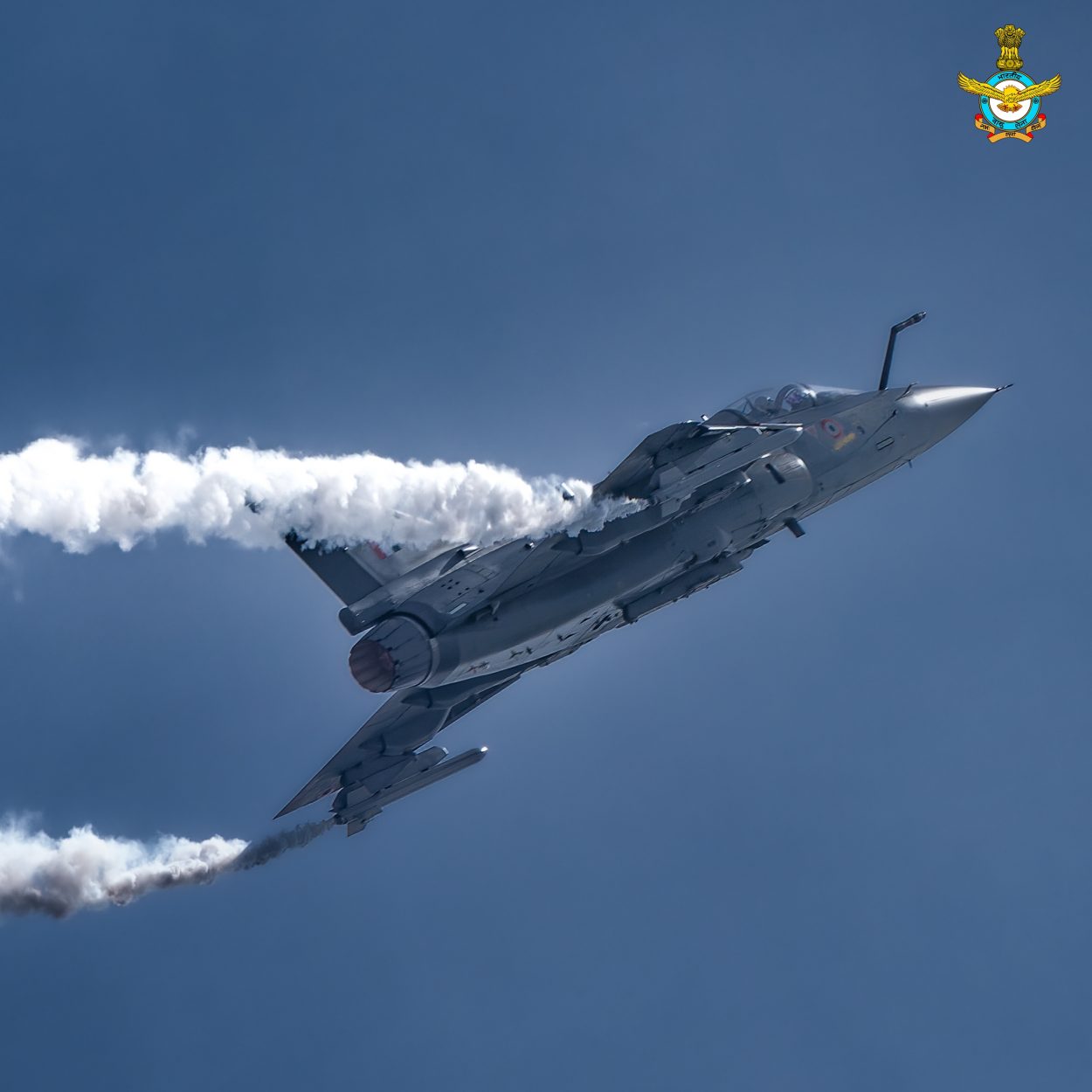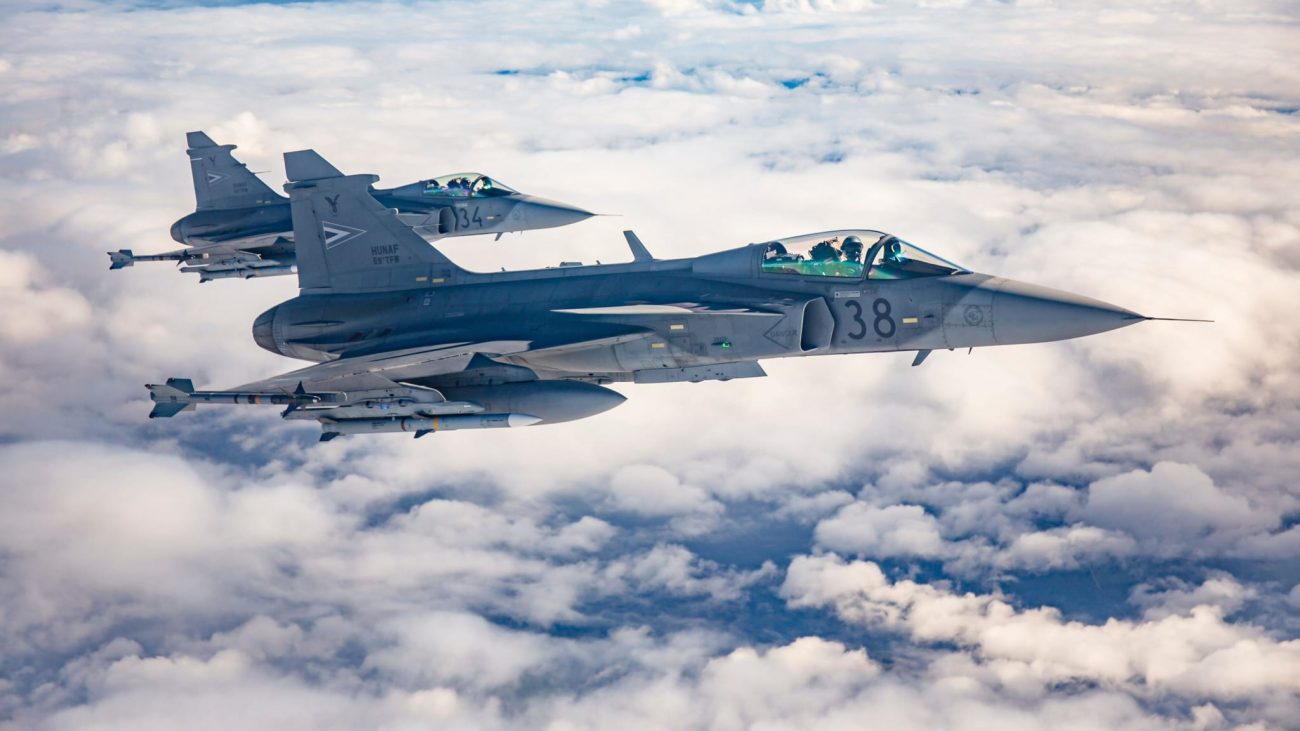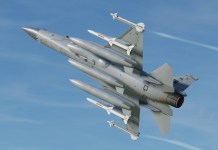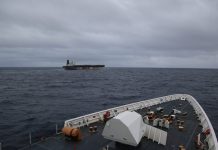Analysis By Girish Linganna
The Indian Air Force (IAF) is planning to buy 114 foreign fighter jets, of which 96 would be made in India, and the remaining ones would be imported from a foreign vendor, as per the latest reports.
World’s Biggest Shipbuilding Country – China Aims To Reclaim Top Spot After Getting Toppled By A ‘Tiny Neighbour’
EurAsian Times had recently notified, citing reports, that all fighter jets will be produced in India through a technology transfer from the original equipment manufacturer (OEM) to an Indian manufacturer. A global tender for the procurement of warplanes could be issued by the end of 2022.
With aerospace manufacturers vying for India’s MRFA contract, the IAF’s search for the next multirole aircraft could end soon. While Rafale is seen as the frontrunner, many experts called the SAAB Gripen a dark horse.
Whichever aircraft wins the deal will operate in the Indian Air Force alongside LCA Tejas Mark 1 and Mark-1A, for which the contract was signed last year.
Even though the dice appear to be rolling in Rafale’s favor, the question is, will India consider SAAB Griepens, which many experts have said are quite similar to Indian indigenous Tejas aircraft.
Saab Gripen vs LCA Tejas
The JAS-39 Gripen is a multirole fighter that debuted in 1996. By 2020, around 271 aircraft had been produced, with the Gripen E, a next-generation smart fighter being the most recent variant.
Simultaneously, while the idea of the LCA Tejas Mark 1 was conceived in the mid-1980s, it was not until several years later that the aircraft entered the production line.
Gripen’s initial development started in 1979 and soon after, a new design was picked and developed: the JAS-39, which took its first flight in 1988.
The first delivery of this variant of the fighter occurred in 1993, entering service with the Swedish Air Force in 1996. That indicates that the Gripen has an edge in terms of experience compared to the much younger Tejas Mark 1.
The Tejas Mark 1 is a multirole combat fighter jet introduced in 2015 in the Indian Air Force (IAF). As of 2020, India had produced 37 of these aircraft. As per open sources, the Tejas Mark 1A, which has more than 40 improvements over the Mark 1 variant, is expected to begin production in 2023.

The Tejas underwent its first development phase around 1986. While the design of this Light Combat Aircraft (LCA) was completed in 1990, it flew for the first time in 2001.
The first squadron made up of Tejas in the Initial Operational Clearance (IOC) form entered service with the Indian Air Force in 2016. The slow progress of the Tejas program has invited much criticism.
Alongside the development period, other technical criteria are worth comparing between the two platforms to make sense of which one trumps the other.
Electronic Suite: Tejas vs Gripen
The Gripen aggressor integrated electronic warfare system efficiently provides a highly accurate radar warning detection and identification. It also provides the latest jamming techniques and a significant amount of passive countermeasures in terms of chaff and flares.
On the other hand, HAL Tejas’ indigenous electronic warfare suite consists of an integrated radar warning receiver, self-protection jammer, chaff, and flare dispenser system, and beyond visual range missile capabilities.
Composite Materials: Tejas vs Gripen
The extensive use of composite materials in any airframe makes the aircraft lighter while also providing high strength. The composite material also reduces the number of joints or rivets, increases the aircraft’s structural integrity, and lowers fatigue cracks.
When it comes to aircraft, the Tejas airframe contains a substantially higher amount of composite materials than Gripen fighter jets. The Tejas Mark 1has a 45 percent advanced composite airframe, while the Gripen has a 25 percent composite airframe. Going by the facts, Tejas does take the lead here.
However, the Gripen beats Tejas Mark 1 in speed, range, capacity, and size. The Tejas is powered by a single General Electric F-404 after-burning turbofan with an output of 85 kilonewtons, while the Gripen, on the other hand, features a Volvo RM12 afterburning turbofan engine with 54-kilonewton thrust and 80.5-kilonewton thrust with an afterburner.
Regarding top speed, Gripen wins the race with a top speed of roughly 2,460 kilometers per hour, leaving the Tejas behind, which has a top speed of 2,200 km per hour. The Tejas trails behind the Gripen in the range with a combat range of 500 km against the Gripen’s range of 800 km.
In terms of dimensions, the Indian fighter jet is 43 feet long, while the Gripen is roughly around 49 feet long. The former has a wingspan of 26 feet 11 inches, while the latter has a wingspan of 27 feet 7 inches.
While the Tejas Mark 1 is 14 feet 5 inches tall, Gripen is about 14 feet 9 inches tall. Gripen is slightly larger than Tejas. A larger aircraft provides an extended range but might be more susceptible to radars.

JAS 39 has a minimum landing distance of 500 meters with a drag chute and 800 meters without a drag chute, whereas the minimum landing distance of LCA Tejas Mark 1 is 750 meters, which puts both the jets on par with each other.
One of the most significant capabilities in an aircraft is its weight and fuel carrying capacity. Tejas Mark 1 possesses a maximum takeoff weight of around 13,500 kilograms and the Gripen has around 14,000 kgs. This means that Gripen can carry more consumables than Tejas.
Gripen has an internal fuel capacity of 2,268 kgs and an external fuel capacity of 1,136 liters. Tejas Mark 1, on the other hand, can only carry 2,458 kgs of internal fuel and external fuel, amounting to 725 liters in the fuselage-mounted drop tanks and 1200 liters and 800 liters in underwing in-board and mid-board stations.
This just indicates that the LCA Tejas Mark 1 is at par with the Gripen as far as fuel capacity is concerned. However, both aircraft share the same payload capacity of 5,300 kilograms.
Both are set to feature an in-flight refueling probe, further enhancing their range. As far as in-flight refueling is concerned, LCA Tejas Mark-1 could potentially be even better than the Gripen jet. The Gripen has a service ceiling of 50,000 feet, whereas the Tejas has a higher service ceiling of 52,500 feet.
Weapons Suite: Tejas vs Gripen
The anti-air weapon suite of Tejas includes missiles like Astra BVR, R-73, I-Derby, ASRAAM WVR missiles, and the Python-5. The Tejas possesses an internal 23 mm Gryazev-Shipunov GST-23 twin-barreled autocannon under the starboard side air-intake, while the supersonic cruise missile version of BrahMos, called BrahMos-NG, is being developed for Tejas.
In the previous year, the Indian Air Force had placed an order for the HAMMER missiles as they intended to strengthen the capabilities of the LCA Tejas Mark 1 fighter aircraft. Once equipped with these missiles, it can take out any ground targets, hardened bunkers at stand-off ranges of more than 70 km.
Meanwhile, the Gripen can carry the combinations of IRIS-T, AIM-9 Sidewinder or A-Darter, MBDA Meteor, and KEPD.350, Rbs.15F anti-ship missile. Gripen’s bomb inventory includes the GBU-12 Paveway II laser-guided bomb, Mark 82 bombs, GBU-39 SDB, and Alternative small-diameter glide bomb.
According to an Indian Test Pilot of LCA Tejas who did not wish to be named, “the Handling Qualities of LCA Tejas is understood to be better off than the Gripen. The weapon-carrying capabilities of LCA are extendable. Although the size and shape of the aircraft are almost the same, there are several enhancements in terms of avionics and flight control laws, giving LCA an edge over Gripen.”
Lack Of Canards – A Big Drawback Of LCA Tejas?
Both aircraft have Delta wings, but a major drawback of the LCA Tejas Mark 1 is that it does not have any canards, making the flight very unstable for the fighter jet.
A canard contributes heavily to improving aircraft control, which is generally witnessed on combat aircraft. Canards also promote the lift of the fighter by replacing the horizontal stabilizer and decreasing the overall drag.
However, this deficiency in LCA has been taken care of in the design stage by making a cranked canard in the delta wing.
The Gripen has a major advantage here as it has delta wings and canard configuration, fly-by-wire flight controls, and a relaxed stability design. Employing digital fly-by-wire flight controls, it maintains stability that improves maneuverability, removes many flight restrictions, and reduces drag.
Tejas Better Than Gripens?
Tejas possesses a superior flight control system and even has a better Fly by Wire system, Quadruplex (4 channel), while the Gripen has a three-channel Digital Fly By Wire system, Triplex.
JAS 39 Gripen has a thrust-to-weight ratio of 0.97, whereas that of LCA Tejas is 0.91. And by virtue of that, the speed of Tejas at Mach 1.6 is comparable with that of the Gripen at Mach 2. Furthermore, LCA Tejas Mk1 is at par with its contemporary aircraft.
Tejas also uses a very high proportion of composite materials in its airframe compared to Gripen. In addition, being smaller gives an advantage of an inherent degree of visual stealth. The Indian plane also has a Y-duct inlet that protects the engine compressor face from probing radar waves.
LCA also beats the Saab Gripen in minimum takeoff distance. While the Gripen has a minimum takeoff distance of 800 meters, the LCA Tejas Mark 1 has a minimum takeoff distance of just over 460 meters.
The airframe’s high usage of composites (which do not reflect radar waves) and the application of radar-absorbent material (RAM) coatings are reportedly intended to minimize its susceptibility to tracking and detection. Gripen does not reflect such features.
Apart from the above, both aircraft are highly comparable.
Tejas MK2
Having a 1.5 m increase in length and a higher thrust engine, the Tejas Mark 2 no longer stands as a light combat aircraft but a significantly more capable and larger Medium Combat Aircraft (MCA).
The wings of the fighter have been pushed outwards, although there is no change in their size and this has effectively enhanced the aircraft’s wing span by 300 mm.
The Mark 2 variant of Tejas has replaced the 1980’s appearance of the Mark 1. A canard has been added ahead of the wings that create a resemblance with contemporary fighter jets such as Sukhoi 30MKI, Eurofighter, or Rafale.
The additional control surface is provided by the canard which creates a vortex and enhances the lifting agility and capability of the fighter.
The TejasMark 2 has a more powerful GE F-414 engine. The Tejas Mark 1’s F-404 engines’ peak thrust of 83 kN was considered inadequate because in close-in dog fight situations against enemy jets, sustained turning, sharp climbing, and sudden acceleration are required.
With that rationale, the Aeronautical Development Agency had decided to back the new variant with a GE F-414 engine that would offer 98 kN of peak power.
With the new engine, Tejas could take off with a maximum all-up weight of 16.5 tonnes, including 6.5 tonnes of external payload and the 10-tonne weight of the fighter.
In addition to 3.3 tonnes in the internal fuel tanks, the Mark 2 variant can carry 3.5 tonnes of fuel in the external drop tanks while it could still carry another three tonnes of sensors and weapons.
The Indian Air force (IAF) ordered Tejas fighters last year. The aircraft can now be seen evolving to a more powerful and bigger medium fighter jet, which would stand a clear notch above its adversaries, especially SAAB Gripens.
- Girish Linganna is an Aerospace and Defence Analyst & Director of ADD Engineering Components (India) Pvt Ltd. Views expressed are personal.
- Email the author at: girish@addengineering.co.in




